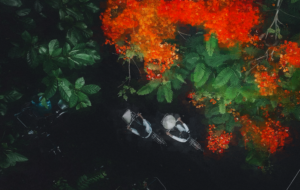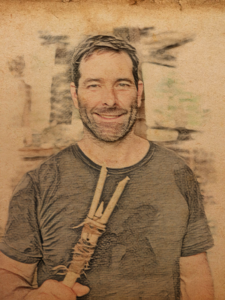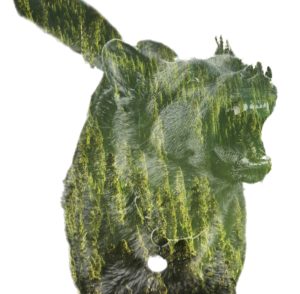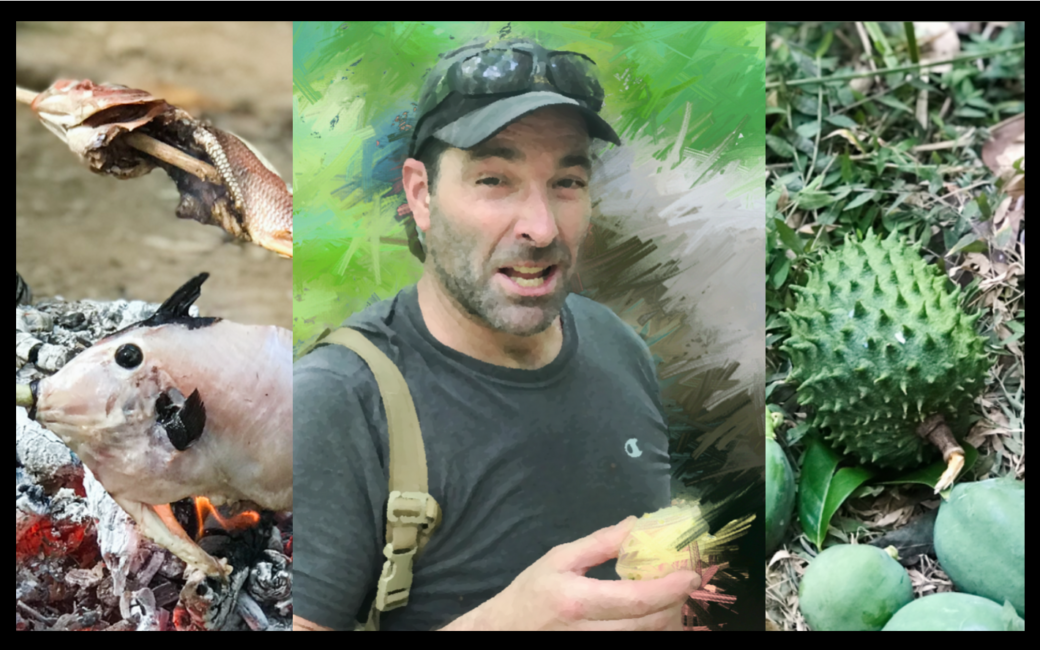How To Lose 30 Pounds In 10 Days With Sensei's Island Diet
I recently went on a bike ride through downtown Cambridge and Boston with my friend Rob who is what you'd call an "urban forager." Rob knows his local trees better than anyone I know. As we stopped to take breaks along our route, Rob was constantly pointing out city trees that produced local nuts, berries, fruits, and even coffee substitutes. Some of these trees had been planted by "guerrilla foragers," meaning savvy individuals who had taken it upon themselves to plant these trees in the cities as a source of food.
I couldn't help but think of the news I had read that morning about the war in Ukraine.
 In the news piece, they discussed how residents were forced to cut down local trees in the cities to make cooking fires, and their food supply had been cut off with only a few days remaining.
In the news piece, they discussed how residents were forced to cut down local trees in the cities to make cooking fires, and their food supply had been cut off with only a few days remaining.
It made me wonder— did they have local urban trees that they knew about that were sources of food?
Were there similar guerrilla foragers who had planted edible urban forests?
Were they forced to burn trees that supplied food?
I thought about how trees represent "survival" in some cultures, meaning that they can provide shelter, fire fuel, water (sap, rain-drip, and healthy groundwater), and food. It's no wonder that the proverbial Tree of Life is ubiquitous on many continents.
 I also couldn't help but think about how here in North America, all major cities depend on transporting food from remote regions, and that major cities like New York and Los Angeles have only 4-7 days of food on the shelves to supply the population if transportation resources are cut off. This was a topic of a recent ninja blog.
I also couldn't help but think about how here in North America, all major cities depend on transporting food from remote regions, and that major cities like New York and Los Angeles have only 4-7 days of food on the shelves to supply the population if transportation resources are cut off. This was a topic of a recent ninja blog.
But on this cold winter bike ride with Rob, my mind also wandered to the warmer climes where many people this time of year venture to escape the cold. When I thought of both survival food and warm tropical islands, the first thing that came to mind was the story that Dai Shihan Mark Roemke told me about the food on his island survival trip.
So, I'll let Sensei Roemke tell you the tale first hand...
A couple years ago I went on an island survival trip with Tom McElroy. This was a group survival trip to the island of St. Croix. Before heading into the bush for our survival scenario, the instructors taught us local ways to make fire, how to identify edible plants, ways to make hunting tools, and how to construct a shelter using local materials. When we arrived at our location, the first thing that we did was focus on making our shelter because, if you have a shelter, you feel comfortable, which is key, especially with a group.
 After we completed our preliminary training, we drove to a remote part of the island, then hiked several miles to our camp spot. Of the basic needs of survival: shelter, water, fire, and food, water was the one essential item that we brought with us to the site due to a lack of local fresh water. It became very apparent early on that you need calories to have energy to simply walk around, to travel to the beach to gather food, to gather almonds, to crack almond nuts and process the seeds, and to gather sea parsley. It was really important to carefully choose the actions you would do each day because your mind doesn't work as well when you are extremely hungry. For example, if you think that you are just going to go hunt after a few days without food, you quickly learn that it is much harder than you think just to perform the basic physical motions.
After we completed our preliminary training, we drove to a remote part of the island, then hiked several miles to our camp spot. Of the basic needs of survival: shelter, water, fire, and food, water was the one essential item that we brought with us to the site due to a lack of local fresh water. It became very apparent early on that you need calories to have energy to simply walk around, to travel to the beach to gather food, to gather almonds, to crack almond nuts and process the seeds, and to gather sea parsley. It was really important to carefully choose the actions you would do each day because your mind doesn't work as well when you are extremely hungry. For example, if you think that you are just going to go hunt after a few days without food, you quickly learn that it is much harder than you think just to perform the basic physical motions.
By the end of the ten day trip I had lost over 30 pounds. I learned that every day when you wake up, the primary thing that you think about is this— where am I going to get food?
This thinking takes over everything else. All other concerns pale in comparison to finding food. It is key to know your local edible foods. It's paramount to know what plants are poisonous. Above all, you need to learn when and where to gather wild edibles and how to process them.
*******
Back on my bike in Boston, I started thinking about sticks. When I lived in Hawaii, there was a local "pig dog" that was semi-feral that occasionally roamed the dirt road that crisscrossed the native forest on the way to my home outside of Volcano Village. When I rode my bike home, the hound often lay in wait and would chase me at full speed while snapping at my heels. As a kid I remembered my dad, who lived his whole life with one dog or another, telling me, "every dog knows what a stick means." By this, he meant that some were "fetchers" but other aggressive types knew that it wasn't a good idea to mess with someone wielding a big stick. He didn't mean that you should hit the animal, but instead, all you needed to do was to raise the stick above your head and the animal would back off.
 With this in mind I picked up a large ohia tree branch as I biked home one day. Just like clockwork, as I rounded a corner by an old abandoned barn, here came the snarling pig dog. As he approached my heels I raised my large stick overhead and snarled back. What happened next was somewhat of a blur. In raising my stick quickly, I instantly disrupted my steering balance and went head-first over my handlebars. I remember watching the dog run away as the world turned upside down, followed by a crash into a nearby koa tree. I remember lying on my back, looking up at a slowly spinning front wheel. The dog's face looked down at me curiously, tail wagging. I threw the stick across the field and he ran off to fetch it. We were buddies after that day.
With this in mind I picked up a large ohia tree branch as I biked home one day. Just like clockwork, as I rounded a corner by an old abandoned barn, here came the snarling pig dog. As he approached my heels I raised my large stick overhead and snarled back. What happened next was somewhat of a blur. In raising my stick quickly, I instantly disrupted my steering balance and went head-first over my handlebars. I remember watching the dog run away as the world turned upside down, followed by a crash into a nearby koa tree. I remember lying on my back, looking up at a slowly spinning front wheel. The dog's face looked down at me curiously, tail wagging. I threw the stick across the field and he ran off to fetch it. We were buddies after that day.
As I hobbled home that day, I thought about sticks. I had just returned from a wilderness survival course in New Jersey. On the last day at that course, I asked the instructor, "what would be the first thing you'd do in a survival situation?" Without hesitation he looked me squarely and said...
"Get a stick!"
He went on to describe all the many uses of a stick in the wilderness— from making shelter, to tools, to fire, and especially for getting food.
Which brings me to today's training video. In the video below, Sensei Roemke demonstrates two ways of using a "throwing stick." This might be a scenario for self defense, or for getting food, such as knocking those island almonds out of a tree.
If you are someone who works with kids, check out our Ninja Mentor Lesson Plans. We have a specific plan that details how to teach the throwing stick skill below to youth.
